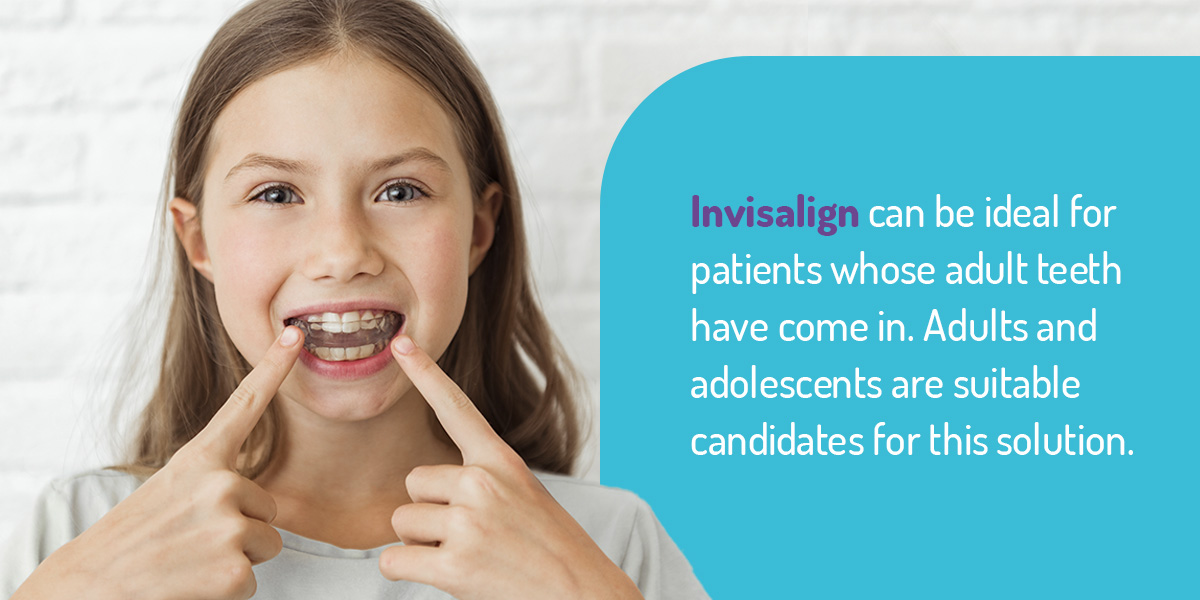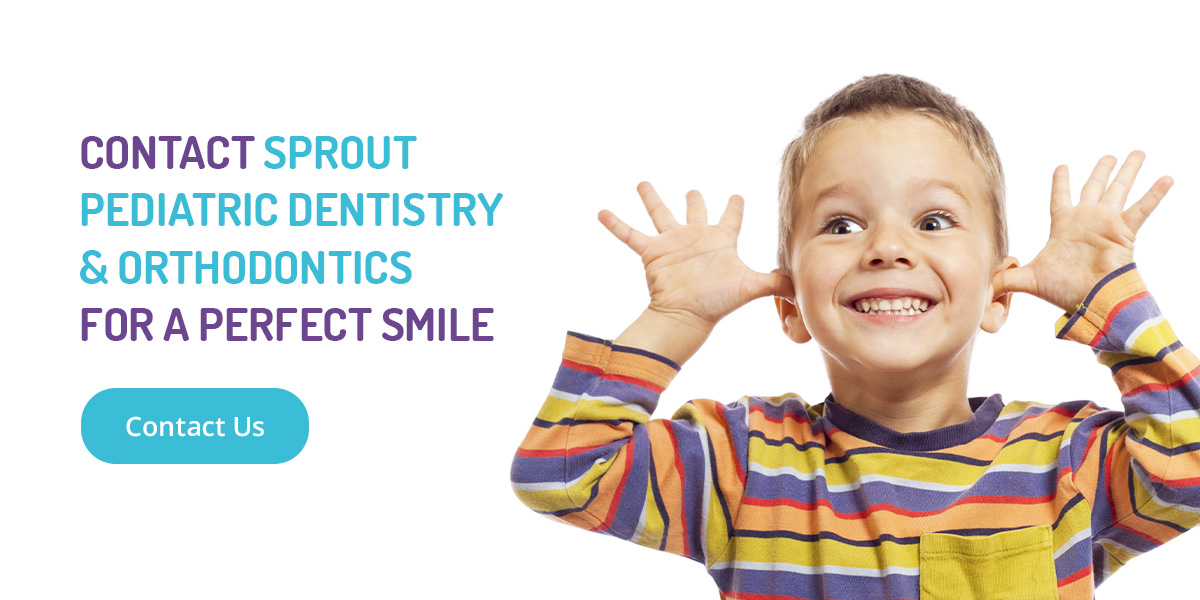As a parent, you want your child to feel confident when they meet and engage with their peers. Being embarrassed to show a bright smile because of crooked teeth can lead to missed opportunities in their social life. Fortunately, there are measures to help.
Build your child’s self-esteem by considering some of the best options to straighten teeth. We’ll discuss four solutions, highlighting how they work, their pros and cons and when each is suitable.
1. Braces
Braces have been a popular and trusted option to straighten teeth for years. They are orthodontic devices attached to the teeth to keep them in place using wires and special adhesives. Each brace molds to the patient’s jawline and teeth for a customized fit.
The aim is to shape crooked teeth into a desired position by adding pressure when kept in place over lengthy periods. Braces can also fix a misaligned jaw, bridge gaps between teeth and make room for crowded teeth. Undoubtedly, the result of wearing braces pays off in the long run.
How Braces Straighten Teeth
Here’s a brief description of how traditional braces fit:
- An orthodontist applies the brackets of your choice material using glue, holding your child’s teeth together with pressure.
- Stainless steel or titanium wires connect to the brackets for further security.
- O-rings or small elastic bands extend around the wire brackets once they are firmly in place, adding more pressure.
- Archwires provide additional support and pressure, conforming to the top and bottom teeth arches as they grow.
- The orthodontist attaches buccal tubes to your child’s back teeth to tighten or loosen the braces.
Some fixture variations depend on the patient’s requirements. These include adding spacers, springs and facebow headgear in exceptional cases.
Types of Braces
Many choices are available to straighten your child’s teeth. You must decide what’s best for your child’s specific needs.
- Metal: Made of stainless steel, titanium or alloy, these braces are durable and long-lasting.
- Ceramic: Ceramic braces are more esthetic than metal.
- Invisalign: These transparent plastic braces lack brackets and wire support. Many people choose these aligners because they are unobtrusive.
- Lingual: Located behind the teeth out of sight, lingual braces are less effective, harder to clean and cause more discomfort than their counterparts.
- Self-litigating: These braces use clips instead of O-rings to secure the braces. It’s easier to brush and floss around them, but these are costlier than other braces.
Pros and Cons of Braces
Braces have potential advantages and disadvantages.
Pros of Braces
The primary benefit of wearing braces as an option to straighten teeth in young children is that they ultimately result in an enhanced appearance and attractive smile. Other pluses of this treatment include:
- Improved mouth health and condition.
- Easier speaking, eating and chewing.
- Reduced risk of gum disease and cavities.
- Teeth that are easier to clean and maintain.
- Boosted confidence due to straighter teeth.
Cons of Braces
The disadvantages of braces are cosmetic and usually only last while they are on your child’s teeth.
- Varying wear periods that range from less than a year to almost three years, depending on the patient.
- Jaw discomfort or irritation after fitting or tightening braces.
- Difficulty eating after each orthodontic checkup, specifically after tightening.
- Your child cannot eat some foods while wearing braces because they can get stuck.
Discomfort and pain are temporary. Your child can manage these side effects with over-the-counter medication or applying dental wax over the braces for relief.
2. Invisalign

Invisalign can be ideal for patients whose adult teeth have come in. Adults and adolescents are suitable candidates for this solution. They are transparent and nearly invisible, as they lack traditional braces’ wiring.
How Invisalign Straightens Teeth
Unlike braces, Invisalign aligners are removable. Here’s how they straighten teeth.
- They come as custom aligner trays that fit to mold teeth to the desired shape with constant pressure.
- Your child can wear one set of aligners for two weeks before switching to a new set.
- They straighten teeth when worn for at least 22 hours a day.
- Your child must remove them when eating and drinking.
Issues Invisalign Fixes
As a semi-permanent solution, Invisalign can fix numerous common orthodontic issues.
- Crossbite
- Underbite
- Overbite
- Open bite
- Gaps between teeth
- Crooked teeth
- Crowded teeth
Pros of Invisalign
Consider these advantages of wearing Invisalign braces.
- Easy to wear and clean.
- Less frequent orthodontist checkups.
- Guaranteed results with prolonged use.
- Improved tooth and general mouth comfort.
- An effective cleaning system to safeguard the braces.
- Compliance indicators that show you and your orthodontist whether your child wears their aligners as directed.
Cons of Invisalign
Invisalign’s comparative disadvantages are few.
- Initial discomfort and tenderness after fitting the aligners.
- Because the trays are removable, your child might not wear them for the required 22 hours daily, leading to poor results.
- Possible side effects include dry mouth, sensitive or bleeding gums, jaw pain or other reactions.
- They come with a higher risk of cavities compared to traditional braces.
3. Tooth Extraction
Extractions are a last resort when it is impossible to save your child’s tooth or they have extreme overcrowding. Learn more about this option below.
How Tooth Extractions Straighten Teeth
People with overcrowded or overly crooked teeth are good candidates for tooth extractions. Removing some that are hindering the others’ growth may be the solution for obtaining straight teeth.
Here’s why your child might need one or more teeth extracted:
- Sensitive and painful teeth.
- Visibly jagged or damaged teeth.
- Teeth growing in the wrong or opposing directions.
- Extremely discolored teeth that don’t respond to whitening.
- Overcrowded teeth that prevent effective braces treatment.
The front or premolar teeth are the most commonly extracted teeth because of their location. Once a dentist removes the troublesome teeth, an orthodontist can fit your child with braces, and their jaw and teeth will grow into place accordingly to achieve the desired outcome.
Pros of Tooth Extractions
Your child may benefit from having a tooth removed. Some benefits of extracting include:
- Reduced pain at the site of decay or infection after removal.
- Improved oral health.
- Fewer chances of recurring tooth issues.
- Cost-effective and permanent.
Cons of Tooth Extractions
Here are some possible downsides of having your child’s tooth extracted.
- Adverse effects to surrounding teeth.
- A visible gap where the tooth was, which can be unsightly.
- Permanent tooth loss compared to options like root canals that could salvage the tooth.
4. Retainers
Teeth and jaws take time to fully set after your child’s braces come off, especially with constant motion while biting and chewing. Retainers ensure they maintain their new shape.
How Retainers Straighten Teeth
Retainers don’t directly straighten teeth. Instead, they are placeholders after braces have served their purpose. Your child must wear their retainer for varying time frames based on their progress.
Pros of Retainers
Retainers reinforce what the braces have done to ensure long-lasting results and straight teeth. The longer your child wears one, the better their results will be. An advantage of retainers is that they keep teeth in place without exerting as much force as braces do.
Cons of Retainers
Retainers do not realign teeth because they lack the pressure of braces. Failure to wear them consistently may allow your child’s teeth or jaw to revert to their prior position.
Contact Sprout Pediatric Dentistry & Orthodontics for a Perfect Smile

We all know a trip to the dentist can be frightening for kids and parents, but it doesn’t have to be. Braces offer a semi-fixed, flexible solution to dental issues, especially crooked smiles or overcrowded teeth. At Sprout Pediatric Dentistry & Orthodontics, we have different options to straighten teeth. We treat our young patients with the utmost compassion and care, so you can feel at ease knowing they’re in the best hands.
To learn more about our outstanding services, check out the results and see for yourself. We are eager to help your child obtain the million-dollar smile they deserve. Call us at 503-223-5039 or schedule a free consultation today. We can’t wait to meet you!

